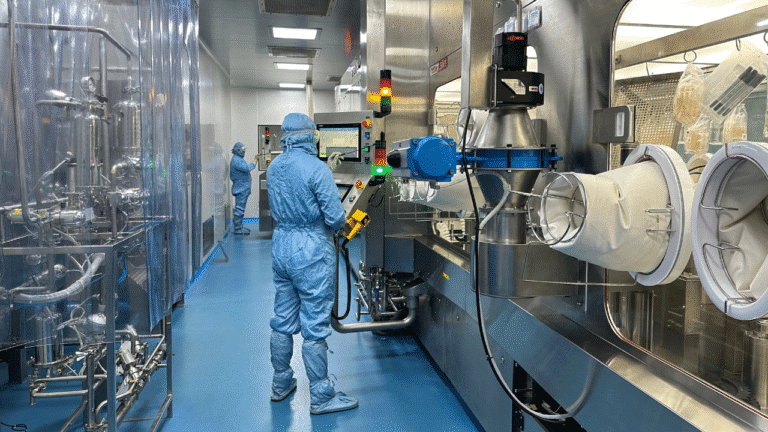
Rural India: Unveiling India's Progress and Navigating Challenges
India’s varied land is like a woven picture made with many differences, where rapid economic growth stands side by side with extreme poverty and social issues. In this dynamic context, the Rural India, home to about two-thirds of the population, are undergoing a profound metamorphosis that encompasses living standards, education, health, and the environment. As we delve into the transformation of India’s rural regions, we uncover a story of progress and potential, accompanied by a complex set of challenges that demand innovative solutions.
A Glimpse of Rural Progress
Enhanced Housing Infrastructure
The improved access to pucca or semi-pucca houses signals a fundamental change in rural living standards. These sturdier structures offer enhanced structural integrity and better overall living conditions. Durable housing not only safeguards against natural elements but also ensures safety and comfort for rural dwellers. Initiatives like Pradhan Mantri Awaas Yojana-Gramin (PMAY-G) have played a pivotal role in providing availability for rural housing, contributing to the upliftment of rural living standards.
Improved Sanitation Facilities
The increased availability of toilets stands as a testament to the heightened focus on hygiene and health in rural areas. This shift has led to a reduction in open defecation and the associated health risks. Improved sanitation facilities do more than bolster health – they also contribute to community well-being and a cleaner environment. The Swachh Bharat Mission Grameen (SBM-G) witnessed over 1 lakh villages declaring themselves as ODF (Open Defecation Free) Plus, showcasing the success of such endeavors.
Extended Electricity Access
Widening access to electricity is an empowering force that connects rural communities, offering improved connectivity, lighting, and avenues for economic activities. Beyond the conveniences it provides, electricity has a profound impact on education, productivity, and the overall quality of life. Initiatives like Pradhan Mantri Sahaj Bijli Har Ghar Yojana (Saubhagya) have been pivotal in enhancing rural electrification.
Clean Cooking Fuel Adoption
The adoption of clean cooking gas signifies a positive shift in rural households. Clean cooking fuels contribute to reduced indoor air pollution, benefiting respiratory health and overall well-being. Beyond health, this adoption aligns with sustainable environmental practices, nurturing a healthier ecosystem. Pradhan Mantri Ujjwala Yojana (PMUY) has played a critical role in this transformation by providing LPG connections to millions of women from BPL households.
Educational and Social Empowerment
Rising female participation in education is a reflection of evolving societal values. This trend not only contributes to gender parity but also fuels inclusive development. The dissemination of knowledge through enhanced connectivity supports educational growth and empowers informed decision-making. Initiatives like Saansad Adarsh Gram Yojana embody this spirit by empowering villagers to make choices and providing opportunities to exercise those choices.
Diversification of Income Sources
The diversification of income sources through non-farm employment opportunities has been pivotal in reducing rural dependence solely on agriculture. This diversification enhances financial stability, rendering rural communities more resilient against agricultural uncertainties. Initiatives like MGNREGA and the National Rural Livelihood Mission (NRLM) have been instrumental in this regard, offering avenues for sustainable livelihood enhancement.
Navigating the Challenges
Poverty and Inequality
The specter of poverty still looms large, characterized by low income, limited access to basic services, and the unequal distribution of resources. The yawning gap between rural and urban income levels, and even within rural regions, poses a significant challenge to equitable development.
Agricultural Distress
The dependence on agriculture as the primary livelihood exposes rural communities to the unpredictable whims of weather patterns, market fluctuations, and crop failures. Outdated farming practices, inadequate irrigation, and fragmented land holdings further exacerbate these challenges.
Unemployment and Underemployment
Inadequate non-farm employment opportunities lead to seasonal unemployment and underemployment within the agricultural sector. The lack of market-oriented vocational training and skill development hinders the rural workforce from engaging in diverse sectors.
Infrastructural Gaps
Insufficient rural connectivity, encompassing roads, electricity, and telecommunication, limits access to markets, services, and information. Basic amenities like clean drinking water, sanitation facilities, and healthcare remain inadequate in many rural areas.
Climate Change and Biodiversity Loss
Rural areas are bearing the brunt of climate change, experiencing droughts, floods, heatwaves, and extreme weather events. These changes can significantly impact natural resources, affecting water availability, soil quality, and the livelihoods of rural communities, particularly farmers and pastoralists.
Migration and Urbanization
The rural exodus, with young and educated individuals migrating to urban areas, presents challenges such as labor shortages, land fragmentation, and loss of cultural identity. On the flip side, urbanization can bring connectivity, market access, remittances, and innovation to rural areas.
Addiction and Mental Health
Rural areas grapple with rising addiction rates among youth and adults, encompassing substances like tobacco, gutka, liquor, and social media. This trend has adverse effects on health, productivity, and social harmony. Inadequate mental health services exacerbate the issue, leading to stress, depression, and violence.
Waste Management and Sanitation
Rural areas often lack proper waste management systems, leading to environmental pollution, health hazards, and aesthetic degradation. Universal access to sanitation facilities and hygiene practices remains a challenge in many rural areas.
Crafting Solutions for Sustainable Rural Development
Localized Employment Opportunities
Focusing on skill development and entrepreneurial opportunities can anchor the rural workforce. By creating employment options near villages through micro-enterprise promotion, skill development programs, and rural infrastructure projects, migration can be curtailed, and income security enhanced.
Curbing Addiction and Substance Abuse
Tackling addiction demands a combination of strict regulations and community-driven awareness campaigns. Holistic interventions can promote healthier lifestyles and curb substance dependence in rural areas.
Balancing Technology Usage
Raising awareness about the adverse effects of excessive internet usage can encourage healthier digital habits. Community initiatives can foster face-to-face interactions, nurturing stronger social bonds.
Comprehensive Waste Management
Swachh Bharat Mission 2.0 should focus on village-level waste management, including segregation at source, composting, biogas plants, and recycling units. This approach can enhance environmental quality, resource efficiency, and generate income for rural communities.
NITI Aayog’s Role in Rural Transformation
NITI Aayog, as a guiding force, can play a pivotal role in addressing rural challenges:
- Policy Formulation: By devising policies that target issues like addiction, waste management, and digital dependency.
- Collaborative Approach: Facilitating collaborations between government bodies, NGOs, private sectors, and local communities to create comprehensive solutions.
- Research and Insights: Conducting in-depth research to understand the root causes of rural challenges and regional variations, leading to effective solutions.
- Monitoring Progress: Implementing robust monitoring systems to gauge the impact of initiatives and recalibrate strategies for optimal results.
- Supporting Innovation: Providing support and funding for innovative projects that tackle challenges such as addiction, technology dependence, waste management, and more.
As India continues its journey of transformation, bridging the gap between rural and urban areas and ensuring holistic development in rural regions will be crucial. Through strategic policies, community-driven initiatives, and collaborative efforts, India’s rural landscape can be nurtured into a thriving hub of progress and opportunity.





